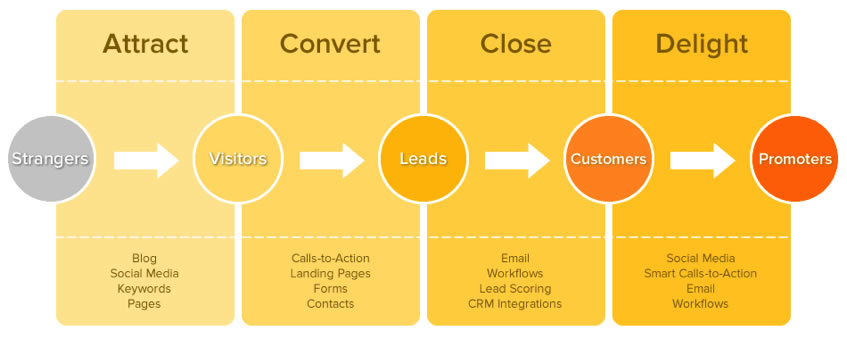Tips on Writing Websites for Lead Generation
 So often we consider SEO content and only SEO considersations. Yes, it is important to drive visitors to your website, but if all they do is visit, where is the ROI (Return on Investment) for your site? Just visiting does not permit you to proactively market them with follow-up content, emails, etc. It may be considered spamming. Thus, it is important to make sure that your content when writing websites goes beyond traffic generation.
So often we consider SEO content and only SEO considersations. Yes, it is important to drive visitors to your website, but if all they do is visit, where is the ROI (Return on Investment) for your site? Just visiting does not permit you to proactively market them with follow-up content, emails, etc. It may be considered spamming. Thus, it is important to make sure that your content when writing websites goes beyond traffic generation.
What is a Lead?
Let’s start with the basics. A lead is a person who has in some way, shape, or form indicated interest in your company’s product or service. This means that instead of getting a random cold call from someone who purchased your contact information, you’d hear from a business or organization with which you’ve already opened communication. For example, perhaps you took an online survey to learn more about how to take care of your car. If you got an email from the auto company that hosted the survey on their website about how they could help you take care of your car, it’d be far less intrusive and irrelevant than if they’d just called you out of the blue with no knowledge of whether you even care about car maintenance … right? And from a business perspective, the information the auto company collected about you from your survey responses would help them personalize that opening communication to meet the existing needs of the potential client. So really, lead generation is a win-win situation. It benefits the customer and the marketer.
Why Do You Need Lead Generation?
Whenever someone outside the marketing world asks me what I do, I can’t simply say, “When writing websites, we create content for lead generation.” It’d be totally lost on them, and I’d get some really confused looks. So instead I say, “I work on finding unique ways to attract people to my business. I want to provide them with enough goodies to get them naturally interested in my company so they eventually warm up to the brand enough to want to hear from us!” That usually resonates better, and that’s exactly what lead generation is. It’s a way of warming up potential customers to your business and getting them on the path to eventually buying. By showing an organic interest in your business, they are starting the relationship (instead of the business starting the relationship with a cold call), making it easier and more natural for them to want to buy from you somewhere down the line. Data from Hinge Research Institute also shows that firms generating 60% of their leads online are 2X more profitable than those generating less than 20% of their leads online.
Within the larger inbound marketing methodology, lead generation falls in the second stage. This methodology makes one concept clear: Consumers have all the power. Lead generation calls for an end to interruption marketing, and it occurs after you’ve attracted an audience and are ready to actually convert those visitors into leads for your sales team. We call this modern marketing. As you can see in the diagram below, generating leads is a fundamental stop in an individual’s journey to becoming a delighted customer of your business.

The Mechanics of Lead Generation
There are four main mechanics for lead generation:
- Landing Page: A web page a visitor lands on for a distinct purpose. While a landing page can be used for various reasons, one of its most frequent uses is to capture leads through …
- Forms: Hosted on landing pages, they consist of a series of fields that collect information in exchange for an …
- Offer: The content or something of value that’s being “offered” on the landing pages. The offer must have enough value to a visitor to merit providing their personal information in exchange for access to the offer
- Call-to-Action (CTA): An image, button, or message that calls website visitors to take some sort of action. When it comes to lead generation, this action is (you guessed it!) to fill out the form on the landing page and redeem the offer.
6 Places to Promote Your Marketing Offers for Lead Generation
1. On Website Pages – Link to your landing pages on various pages of your website through CTAs. Try to align the offer you link to with the goals of that page. For example, a visitor to your website’s product pages might indicate someone who is further along in the sales cycle and closer to buying, so place CTAs like free trials, product demos, or free consultations that speak to the interests of a visitor who is closer to a purchasing decision.
2. On Your Blog – Just about every blog post you publish should have an opportunity to include a CTA. Again, try to align the content of the offer with the content of the blog post as best as you can in order to increase clickthroughs. You can also link to other marketing offers within a blog post if the content of the offer is relevant to the post.
3. In an Email Signature – This will be particularly effective for your business’s sales team. Encourage them to add a brief text-based call-to-action at the end of their email signature to help nurture prospects with whom they’re communicating using more offers of free content in exchange for more information.
4. On Social Media – Sharing links to your offers’ landing pages is the main way you can use social media for lead generation. Use the space that the specific social network allows to describe the value that fans and followers will get out of the offer. Try to vary the timing of when you share certain offers so people who follow you on multiple social sites aren’t hit with the same promotion on each site.
5. Within Press Releases – If your business uses news releases as a way to promote information about your business, don’t overlook the opportunity they provide for lead generation. Just as you’d use anchor text (text that is visible and clickable in a hyperlink) in a blog post to point to a landing page, do the same in your news releases.
6. In PPC Campaigns – If you’re using pay-per-click (PPC) as a way to complement your organic SEO efforts, think of your PPC ads as simply CTAs for your offers. Follow best practices for creating calls-to-action, and you’ll enjoy better clickthrough rates and more leads from your PPC campaigns as well.
